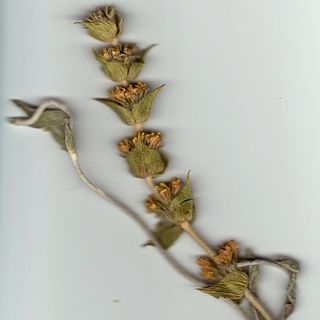
Sideritis, also known as ironwort, mountain tea, and shepherd's tea, is a genus of flowering plants well known for their use as herbal medicine, commonly as an herbal tea. They are abundant in Mediterranean regions, the Balkans, the Iberian Peninsula and Macaronesia, but can also be found in Central Europe and temperate Asia.

Bellevalia romana is a species of perennial herb in the family Asparagaceae. They have a self-supporting growth form. Individuals can grow to 22 cm.
Hypericum australe is a species of plants in the family Hypericaceae. Individuals can grow to 24 cm tall.

Leontodon tuberosus is a species of plant in the family Asteraceae.

Medicago rugosa is a species of annual herb in the family Fabaceae. They have a self-supporting growth form and compound, broad leaves. Individuals can grow to 0.2 m.
Micromeria microphylla is a species of plants in the family Lamiaceae.
Vicia parviflora, the slender vetch, is a species of annual herb in the family Fabaceae. They are climbers and have compound, broad leaves. Individuals can grow to 0.24 m.

Vulpia fasciculata, the dune fescue, is a species of annual herb in the family Poaceae. They have a self-supporting growth form and simple, broad leaves. Individuals can grow to 0.24 m.

Polygonum bellardii, the narrowleaf knotweed, is a species of annual herb in the family Polygonaceae. They have a self-supporting growth form and simple, broad leaves. They are native to Canada. Individuals can grow to 0.49 m.

Polypogon viridis, the beardless rabbitsfoot grass, is a species of perennial grass in the family Poaceae. They have a self-supporting growth form and simple, broad leaves. Individuals can grow to 0.43 m.
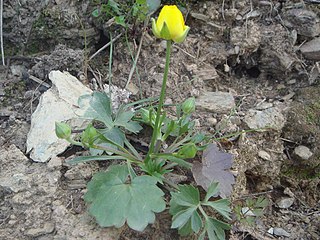
Ranunculus paludosus is a species of perennial herb in the family Ranunculaceae. They have a self-supporting growth form and simple, broad leaves. Individuals can grow to 0.23 m.
Romulea variicolor is a species of plant in the family Iridaceae.

Ruscus hypophyllum is a species of shrub in the family Asparagaceae. They have a self-supporting growth form and simple, broad leaves. Individuals can grow to 0.42 m.
Scrophularia peregrina, the Mediterranean figwort, is a species of annual herb in the family Scrophulariaceae. They have a self-supporting growth form. Individuals can grow to 0.39 m.
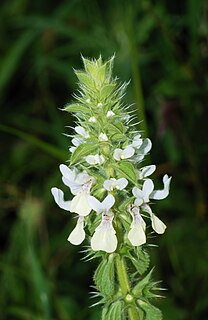
Stachys ocymastrum, the Italian hedgenettle, is a species of annual herb in the family Lamiaceae. They have a self-supporting growth form. Flowers are visited by Green-striped White. Individuals can grow to 0.4 m.

Tamarix africana, the African tamarisk, is a species of tree in the family Tamaricaceae. They have a self-supporting growth form and simple leaves. Individuals can grow to 6.3 m.
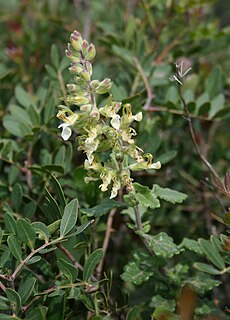
Teucrium flavum is a species of shrub in the family Lamiaceae. They have a self-supporting growth form and simple, broad leaves. Individuals can grow to 0.39 m.
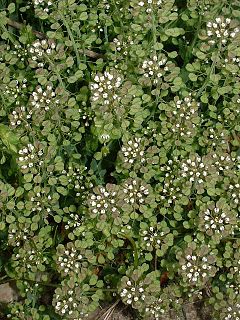
Thlaspi perfoliatum is a species of plants in the family Brassicaceae.

Trifolium scabrum, the rough clover, is a species of annual herb in the family Fabaceae. They have a self-supporting growth form and compound, broad leaves. Individuals can grow to 0.12 m.
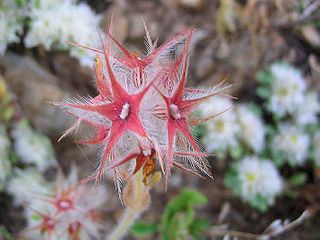
Trifolium stellatum, the star clover, is a species of annual herb in the family Fabaceae. They have a self-supporting growth form and compound, broad leaves. Flowers are visited by mason bees, Anthocopa, Osmia aurulenta, and Anthophora. Individuals can grow to 0.11 m.















